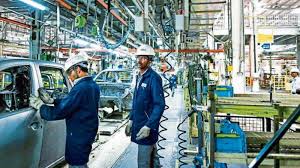India’s gross domestic product (GDP) is expected to register a growth rate of about 7% in 2022-23 and between 6.1% and 6.3% in the June-September quarter of this fiscal, suggested the RBI report. The GDP growth numbers for the second quarter will be out by the end of this month, however, the monetary policy review presented in October, has projected a GDP growth rate of 6.3% for this quarter.
The Reserve Bank of India has just released the seventh edition of its statistical publication titled “Handbook of Statistics on Indian States 2021-22”. Through this publication, the Reserve Bank has been disseminating wide-ranging data on the regional economies of India also. This publication covers sub-national statistics on socio-demographics, state domestic product, agriculture, price and wages, industry, infrastructure, banking and fiscal indicators across Indian states over various time periods ranging from 1951 to 2021-22. In the current edition of the Handbook, two new sections – Health and Environment have been introduced.
It its report, RBI has said that Indian economy has exhibited remarkable resilience to multiple shocks encountered in succession since early 2020, preserving macro stability while sustaining the momentum of recovery in growth. Now, with inflation beginning to show signs of easing, the macro economic outlook of the economy appears to be on course for good growth in the current fiscal though. However, RBI’s article has made it clear that India is still sensitive to global headwinds.
According to the central bank, balanced regional development and inclusive growth have all along been the two key thrust areas of India’s development agenda, and as the nation celebrates 75 years of independence (Azadi Ka Amrit Mahotsav), the regional dimension of economic progress assumes even greater importance.
Availability of adequate and comparable data at one place for different states on various dimensions – economic, social and demographic, can aid in conducting relevant research on sub-national challenges, opportunities and feasible policy options.
This seventh edition updates the existing data series besides expanding the coverage to incorporate two new sections- Health and Environment and nine new tables- (i) state-wise Maternal Mortality Ratio under social and demographic section, (ii) state-wise total fertility rate under the social and demographic section, (iii) state-wise children aged 6-59 months who are anaemic under health section, (iv) state-wise pregnant women aged 15-49 years who are anaemic under health section, (v) state-wise cold storage capacity under agriculture section, (vi) state-wise forest cover under environment section, (vii) state-wise tree cover under environment section, (viii) state-wise total installed capacity of grid interactive renewable power under infrastructure section and (ix) state-wise outstanding guarantees of state governments under fiscal section.
However, in its State of the Economy report, the central bank has also made it clear that the views expressed in the article are of the authors and don’t represent the views of the RBI.




























 WhatsApp us
WhatsApp us
Pingback: บ้านมือสอง
Pingback: https://www.diamondfilms.com/idioma.php?id=1&ref=https://devs.ng/sportingbet-nigeria-review/